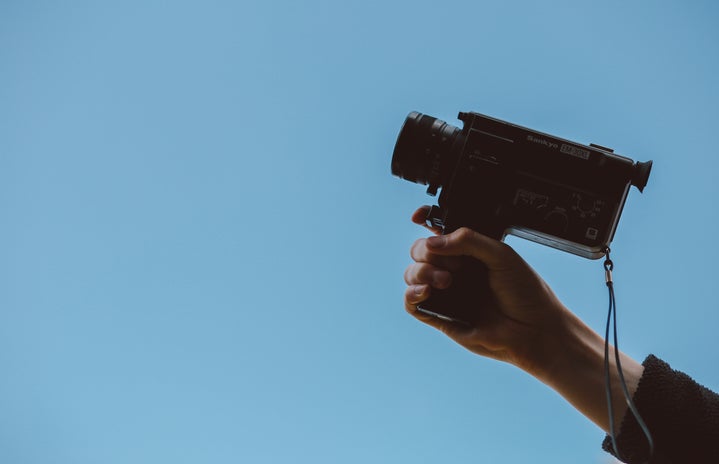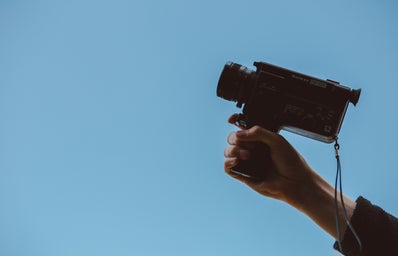There will be spoilers in this article so please proceed with caution just as Lance Corporals Schofield and Blake did.
Sam Mendes’ war time epic ‘1917’ was a highly-anticipated film, expected to perform well in the 2019/20 award seasons (currently it has won 2 Golden Globe awards and 3 Critics Choice awards with a further 10 Academy Award nominations and 9 BAFTA nominations). It follows the dramatic journey of Will Schofield (played by George MacKay) and Tom Blake (played by Dean-Charles Chapman) across no man’s land into unknown territory which presents unexpected, emotional, horrifying surprises.
A huge selling point of 1917 is that the film was shot to flow as two continuous, uninterrupted shots. One shot carries the film from the opening frame to the village of Écoust, the second from Écoust to the final frame. I’m going to try focus purely on the techniques used in the film, however some discussions require spoilers in order to make sense. Before getting into these techniques, here is some background as to why Director Sam Mendes wanted to use this one-shot technique. During an interview on the podcast Reelblend, Mendes said the one-shot technique helped to capture the intensity of the landscape and surroundings and that he used the transition into the second shot to depict a tonal shift from naturalism into a more mythic tone (this shift was further aided using lighting as time has passed during the shots and now exists between night to dawn). Mendes set out to create a subconscious hallucination ‘somewhere more surreal, almost dream-like. And horrifying too… into something that feels like a descent into hell.’ If you ask me (not that you did but here’s my answer anyway) Mendes achieves this very well. As we follow Schofield through the burning village of Écoust in a chase scene that ends with a plunge into a rapid river the feeling of hell is all too real, I was holding my breath and I didn’t even realise! This one-shot format also creates a different awareness of the land’s geography as audiences follow the characters on their journey through the trenches, across no man’s land, through Écoust and to the 2nd Battalion. A deeper understanding of the physical difficulty brought about the by distance, environment and space covered is gained.
Now for the really interesting part. How was the one-shot technique executed for 1917? What difficulties had to be overcome? How did they make such smooth transitions between all the separate shots to create a seamless effect? Mendes, cinematographer Roger Deakins (The Shawshank Redemption, Skyfall, and Sicario), editor Lee Smith (Inception, Interstellar, Spectre, and Dunkirk), and the actors began pre-production work four months before cameras even began rolling. They used scale models, light contraptions and many, many, many rehearsals to plan movements, shadows and transitional cutting points. One particularly amazing fact – and something that would absolutely never have crossed my mind but is oh, so obvious once you head it – is that if a scene lasted, say eight minutes and consisted of the characters making their way through trenches, then those trenches had to be long enough that they took an actual eight minutes to walk through and complete the scene so that the number of cuts required in the film was minimal. For this reason and many others, a total of 5200ft of claustrophobic, mucky trenches were built where doorways were widened to accommodate camera rigs and crew, ramps were used to transition from no man’s land down into the trenches, and camera crew could be found in costume so allow for seamless transitions between hand held, crane, wire, and drone camera work (they also earned some extra £££ for their use as extras, loop hole!!). Every part of the production was timed and rehearsed over and over. Actors had to say their lines at a certain time, at a certain speed. Cameras could only move forward to maintain seamless movement – this was worked around by using 360° camera equipment and techniques.
There is one particular scene where the importance and emphasis of timing is best exemplified: when Schofield runs along the battlefield as soldiers are charging and explosions are happening in the background. At the top of the scene Schofield climbs out of the trench and at this point the camera is attached to a 50ft crane which follows how ascent out of the trench. Two camera grips dressed as extras then detach the camera from the crane and begin to move backwards as Schofield starts his journey parallel to the charging men, the grips then attach the camera to a second crane attached to a jeep (which is already slowly moving so there is no pause in movement). From here the jeep speeds up and Schofield begins running full speed towards the camera. There are a couple of moments in the film where Schofield collides with soldiers and falls to the ground, these moments were accidental but filming continued as there were only enough explosions for four takes but these trips actually add to the chaos of battle. The second issue the one-shot technique faces in 1917 is lighting. Much of the movie takes place in open air where overcast conditions are preferable to sunny days because overcast lighting is more consistent and there were times where production came to a halt because of too much sunlight! In the Écoust scenes lighting was a vital component. As Schofield navigates his way through the fiery village the interaction between shadow and light is immensely important as embers and flames are in constant movement and casting shadows. The planning of this was done using a scale model of the ruined village with light rigs arching over the model to determine how the flares (used to produce fire and embers) would light the scene, where the best camera angles are and how they would cast shadows on the buildings and through windows. The result of this was an incredibly stunning, breath-taking scene that was truly so beautiful it made me cry purely because it was so gorgeous. I want to end this article on a really important note that I think is worth reiterating over and over forever.
Films and TV shows go so far and beyond the final product that gets released to audiences. Behind every production there are hundreds, maybe thousands, of people in specialised fields working hard to create the final product and coming up with nifty, cunning solutions to problems you would never know exist.



